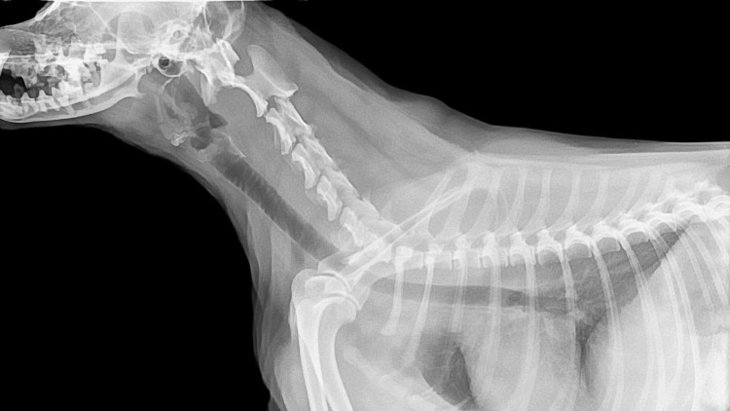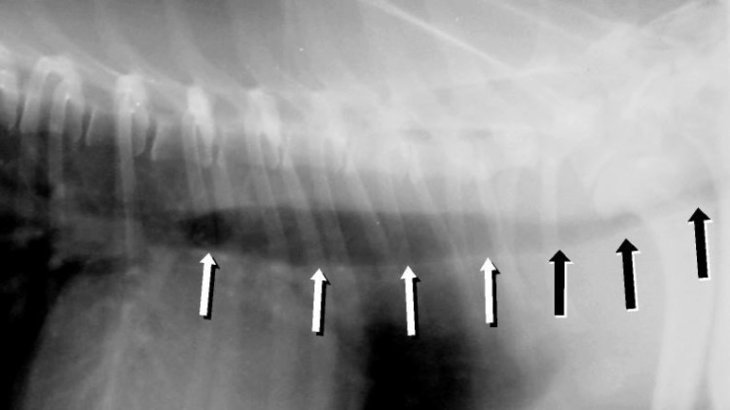Dog X-ray Costs and How to Save
The last thing we want is for our pets to get sick or injured. But it’s something we must all prepare for, both emotionally and financially.
Some people can predict the future.
For everyone else, there's pet insurance.
Looking to save on vet bills? See which pet insurance is right for you.
Instant results. 1M+ pet parents served.
⭐⭐⭐⭐⭐ 4.9 stars across hundreds of reviews.
When you bring your pet in for a checkup, your veterinarian may recommend they take a “closer look.” This could mean diagnostic tests, such as blood work or even stool sample tests. But if your pet is suffering from an injury like a broken bone, your veterinarian may recommend an X-ray (commonly referred to as radiographs around the vet clinic).
You can expect an X-ray to add a substantial amount to your average vet vist costs. There are a few things that factor into the cost of an X-ray in the vet, which we'll go over below.
The Average Cost Per X-ray for a Dog
The typical cost of X-rays in dogs is about $150 to $250.
$150 - $250
Average cost of dog X-rays
The procedure itself is relatively inexpensive, minimally invasive, and painless for your pet, but it requires the animal to remain still for an extended period of time. This is much more difficult to accomplish with a dog than with a human. Most dogs require some type of sedation for the X-ray to be done properly so the picture is clear and your vet can see what might be wrong with your furry friend.
For this reason, the size of your dog plays a part in the cost. Larger dogs require more sedative drugs than smaller dogs, so they tend to cost more. If your dog is more fearful or upset, they may need additional sedatives or even general anesthesia for the procedure.
The Benefits of an X-ray for Your Dog’s Diagnosis
X-ray imaging devices use electromagnetic waves to see images of your pets internal organs, muscles, blood vessels and bone structure:

Dog X-ray image of thoracic region
This X-ray provides a clear and helpful image of the dog’s chest, neck, and jaw area, and the dog’s bones and other body structures are clearly defined.
X-rays are quick and painless. An X-ray machine does expose your animal to a small amount of radiation, but it is negligible. According to the American Cancer Society, a typical chest X-ray exposes the subject to the same amount of radiation they’d experience in everyday life over 10 days.
As with most forms of medical imaging, the biggest benefit of an X-ray for your dog is an accurate diagnosis.
There are many health problems an X-ray could reveal.
For example, if your vet believes your dog has a cracked or broken bone, it could reveal the exact location of the break. You can even use an X-ray to identify a spinal injury that may not be apparent or to identify an ingested object like a chew toy or sock in a pet’s stomach that is making your dog sick.
X-rays can reveal bone infections, arthritis, dental decay, and even bone cancer. Your veterinarian may call for an X-ray to detect other problems, such as heart issues or breathing conditions.
Here's a look at an X-ray revealing a collapsed trachea in a Yorkshire Terrier:

Dog X-ray image of collapsed trachea
When your veterinarian knows the exact location and nature of the problem, they can prescribe a more appropriate treatment. The knowledge they gain from an X-ray can also help them make a prognosis for how long it will take for your dog to recover from their illness or injury.
Altogether, an X-ray can take the mystery out of why your dog is suffering.
The Limitations of What X-rays Can Show in Your Dog
An X-ray isn’t always the best tool for diagnosing your dog’s health problem. For some diseases, tests of your animals’ blood, urine, or feces might help provide a better diagnosis. Your vet may not even require an additional test if they are confident in their diagnosis after performing a comprehensive physical exam.
It’s also important to distinguish between X-rays and other types of diagnostic imaging, like ultrasounds.
Medical ultrasounds use high-frequency sound waves to produce live videos and images of soft tissue structures within the body like your pets heart, bladder, or uterus. Ultrasounds are often used to confirm if a dog is pregnant, but they have many other valuable uses in diagnosing illnesses.
Depending on the symptoms, your vet may recommend magnetic resonance imaging (an MRI) or a CT scan. These are high-definition imaging techniques that can pinpoint small problems within your pet that might be harder to find or diagnose with an x-ray.
These types of tests generally cost more than X-rays. For example, you can expect an ultrasound to cost between $300 to $600. But if you have pet health insurance for your dog, you may be able to avoid the high costs of medical imaging.
$300 - $600
Average cost of an ultrasound for dogs
Cover the Costs of Your Dog’s X-ray with Pet Insurance
X-rays are often used in conjunction with other tests and treatments. At the very least, you’ll need to pay our veterinarian for their time and their diagnosis.
With pet insurance, you can get reimbursed for the high costs of X-rays, ultrasounds, and other imaging techniques. Often, the reimbursements you receive for expensive veterinary care far outweighs the cost of pet insurance.
Some pet insurance benefits even cover wellness exams and other types of routine care at the vet. If you take your dog in for a regular checkup and the vet finds something wrong, an accident/illness plan with a wellness component could cover the cost of the checkup, your dog’s diagnostic tests, and the treatment and medications your dog needs to get better.
While it can be tricky to find the right pet insurance at the best price, Pawlicy Advisor is a free tool that does the homework for you.
Looking to save on vet bills? See which pet insurance is right for you.
Instant results. 1M+ pet parents served.
⭐⭐⭐⭐⭐ 4.9 stars across hundreds of reviews.
See which pet insurance is right for your best friend.
Do you want to find the best pet insurance?
Let's analyze your pet's breed, age, and location to find the right coverage and the best savings. Ready?
Analyze My PetAbout Pawlicy Advisor
The pet insurance marketplace endorsed by veterinarians, at Pawlicy Advisor we make buying the best pet insurance easier. By comparing personalized coverage and pricing differences we can save you a ton of money, up to 83% in some instances!
Instantly Compare Pet Insurance Plans
Guides
Determine If Pet Insurance Is Worth It
Comparison Charts
Find Your State
Dog Insurance
Cornell University College of Veterinary Medicine
Aliyah Diamond has more than ten years of experience in animal hospitals - working with dozens of species from dogs and cats, to elephants and snow leopards. Her lifelong passion for helping animals currently has her earning her doctorate of veterinary medicine at Cornell University and helping Pawlicy Advisor educate pet parents.
